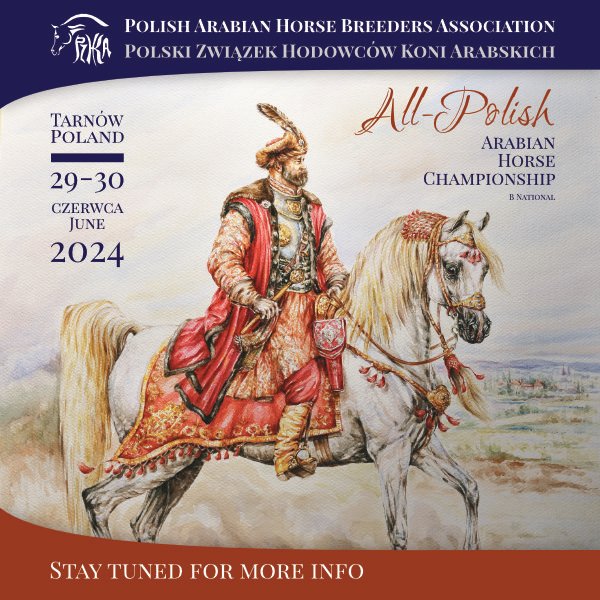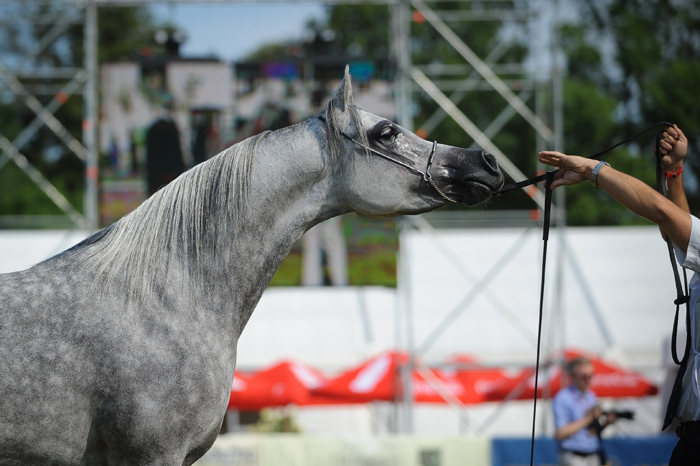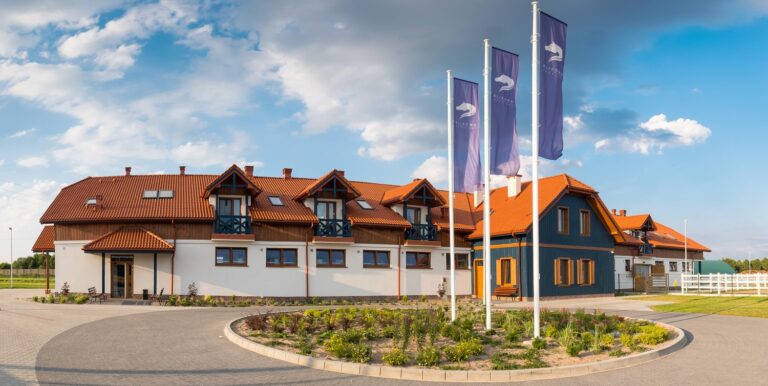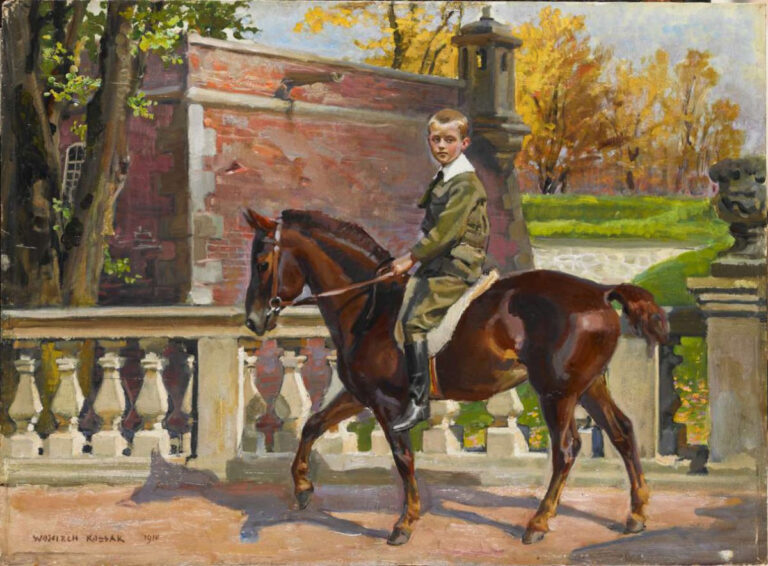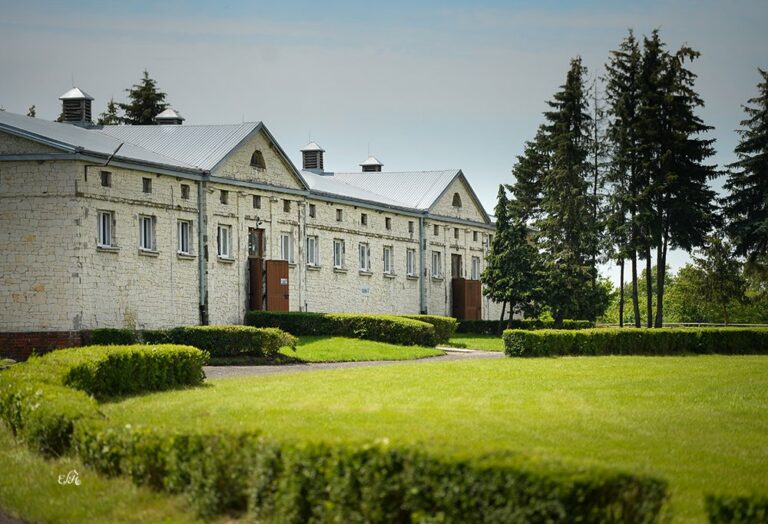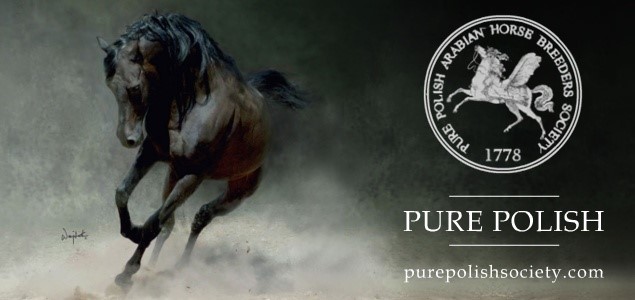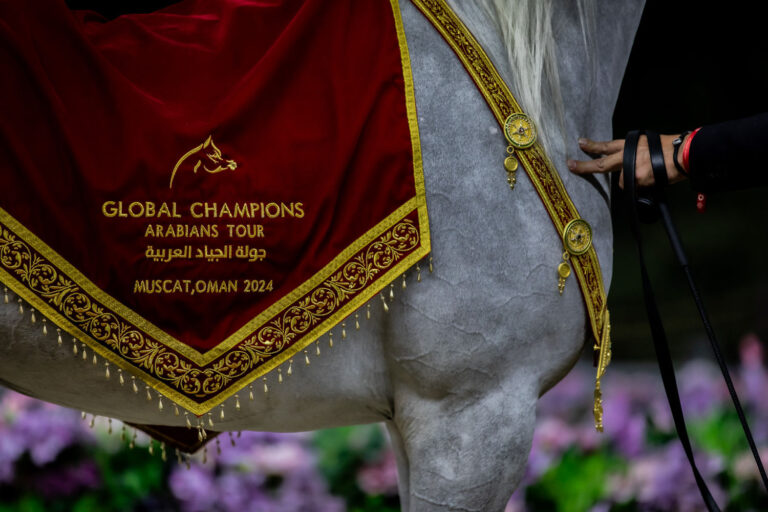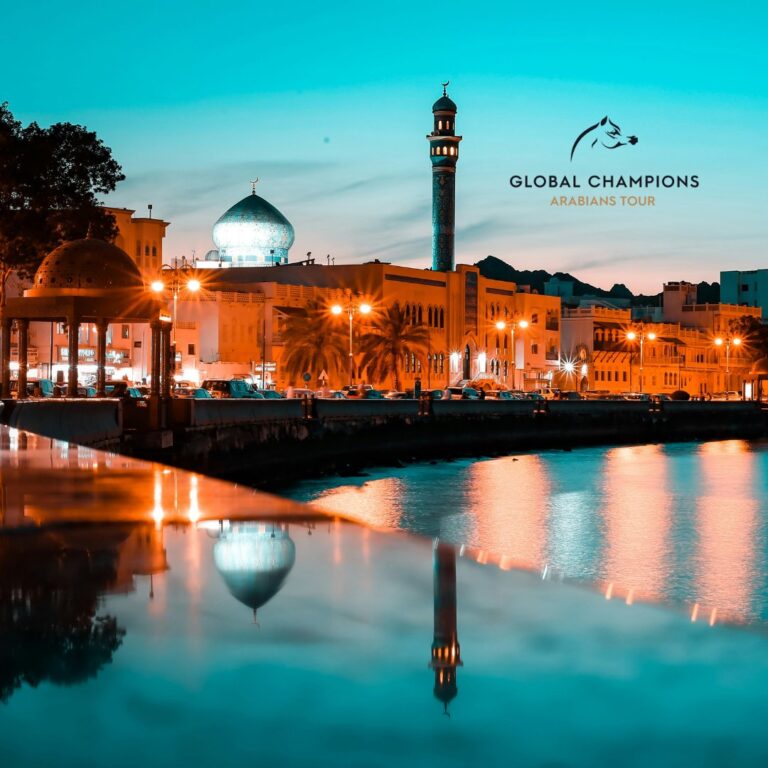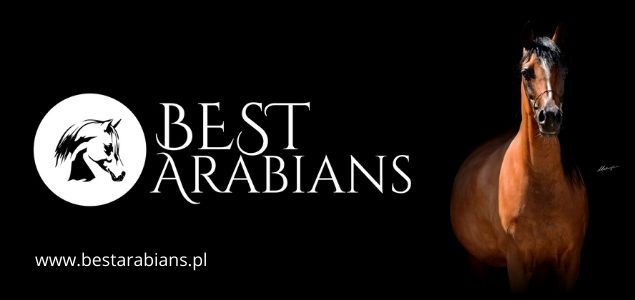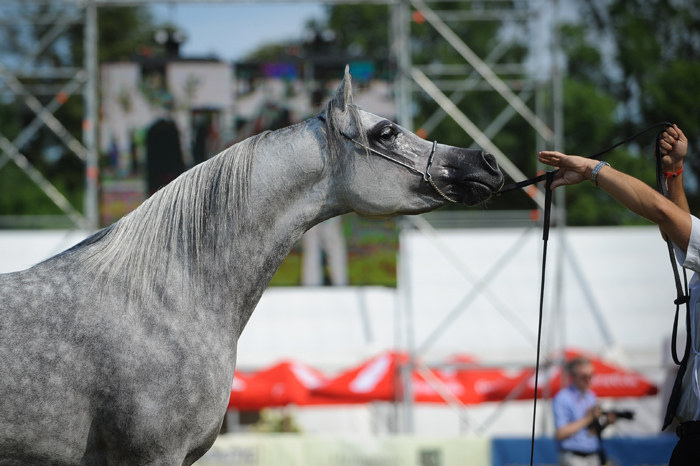
The 2015 Pride of Poland Sale saw a record price not only for a horse from state breeding (Pepita), but also the highest price in the history of Janów Podlaski Sales for a private bred horse. This record-setter was the Falborek-bred grey Wasa (WH Justice – Waresa/Empres), purchased by the owners of Umm Aludham Stud from Qatar.
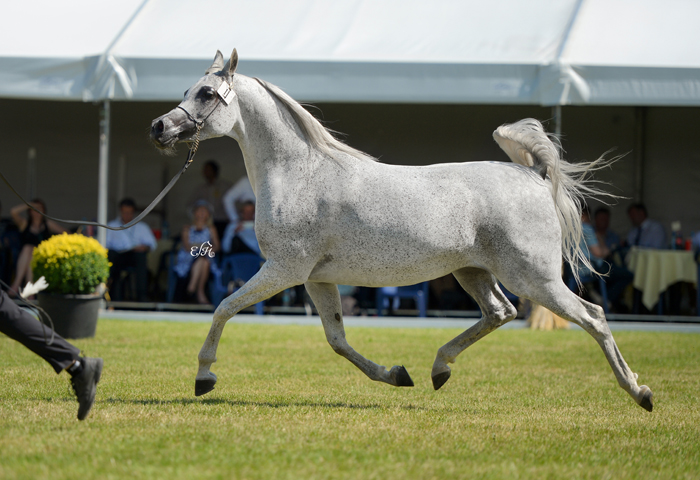
“We were searching for a high quality mare to influence our pure bred breeding program in Umm Aludham Stud”, explains breeder Nasser Al Hajri. “Wasa’s price was high but taking into consideration her high quality we took the decision to purchase her. I share this passion with my brothers. It is a lovely mare and we like having her. She is kind, very nice, even to kids. Everybody can go and touch her and she is always very friendly”. As a father to three kids Nasser cares about the character of the horses. “My kids like the horses, they ride their ponies. I like to keep them busy with horses. The whole family is involved with horses”, he admits.
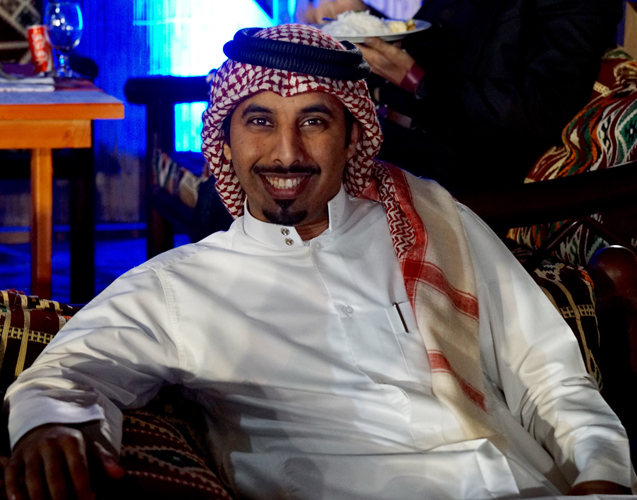
Today Umm Aludham Stud is home to 35 horses, 16 broodmares. All of them are in Qatar, except the mare DA Magic Moment (WH Justice – DA Enfidha/DA Esstaan), bred by Diamond Arabians (Austria), whom Nasser calls “the Queen of the Stud”. DA Magic Moment is in training in Europe, at the Giacomo Capacci training centre.
“You have to work really hard to have the chance to buy horses of such high quality. I work 10-11 hours every day”, underlines Nasser, who used to work at Qatar Petroleum as an engineer and now is the technical affairs director at the Qatar Foundation.
Pride in the show arena and the breeding barn
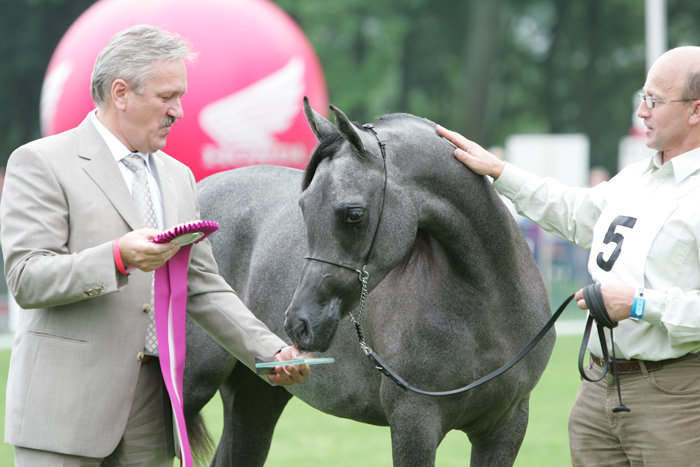
At the time of being offered for sale Wasa already had a successful show career to her name and was also a valued broodmare. She was born in 2006 at Falborek, a stud owned by Krzysztof Goździalski and his family. Falborek began breeding Arabian horses at the turn of the century and quickly found itself among the top private studs, achieving international successes, both at shows and the races. Horses from Falborek known around the world include, among others: Altis, Alpar, Eksterna, Espinezja (bred by Leszek Jarmuż, but achieving successes under the Falborek banner), Emarc, Enezja, Eshila, Emlahaba, Perlahaba and of course Wasa.

Wasa very quickly proved her huge show potential. In Poland she became the first private-bred filly to place so high at Białka! As a yearling (in 2007) she won the Junior Spring Show Reserve Championship there, earlier winning her class with a score of 92,33, including 2×20 for head and neck. In later years she was awarded, among others, with the bronze medal at the Arabia-Polska show. On international arenas she often placed in the top five of her classes.
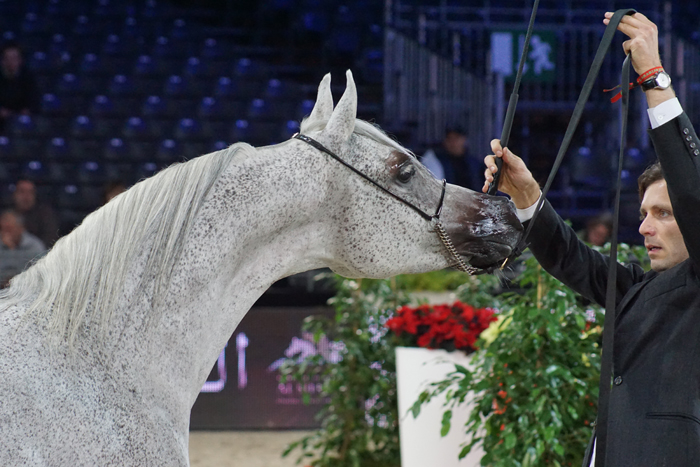
In Qatar she has also already brought lots of joy to her owners. “I showed Wasa at the Qatar Int. Show on March 10th this year”, Nasser recalls. “She scored 92,80 (incl. 2×20 for type) and she was second in class, after Tehama Ballalina, later gold champion mare. In the same class there were Wkra and Ganga – both placed behind Wasa. Soon after the Int. Show there was the Qatar Nat. Show for Individual Owners in April of 2017. She got Gold there. She scored 93 pts, incl. 3×20 for type, 4×19,5 for head & neck, 3×19 for body and topline. Al Jazeera took silver at that show”.
At Falborek Wasa produced four daughters. Wabia, Wersa, Washa and Wasalia are names known to Arabian horse enthusiasts in Poland and abroad. Their quality was one of the reasons for purchasing Wasa, as confirmed by Nasser Al Hajri, who had the opportunity to see her daughters at the show ring in Janów several times.

Wabia (by Al Lahab) born in 2010, a bronze medallist from Prague in 2012 and a frequent class top five finalist at Janów Podlaski and other shows (Ströhen, Berlin) is the second – after her dam who cost the buyers 252 thousand Euro – highest sold private mare in the history of the Pride of Poland. In 2016 she was sold to Kuwait for 100 thousand Euro. Wersa (by Ekstern) born in 2012, was a silver medallist in Wels and a bronze medallist in Białka. Washa (by Kahil Al Shaqab) born in 2013 – today owned by Krzysztof Falba – also placed in the top five of her classes. Wasalia (by EKS Alihandro) born in 2014, gained the junior silver champion title during the show in Radom in 2016 and a bronze at the Al Khalediah European Arabian Horse Festival in Nowe Wrońska that same year. Another generation is following in the same footsteps – Wabia’s daughter, Wanilia Sky (by Espimar) born in 2015 found herself in the top five of her class in 2016 in Wels. The young, promising Wanilia Sky, as well as Wersa and Wasalia, are mares that represent this line in Falborek today. “Wasa was my favourite mare, I shed some tears when she left”, admits son of Krzysztof, Lucas Goździalski, breeder and international judge. “Thanks to her we can continue a damline that was not very known before, neither in Poland nor abroad. We started the “W” damline and I think we can be proud of this”.
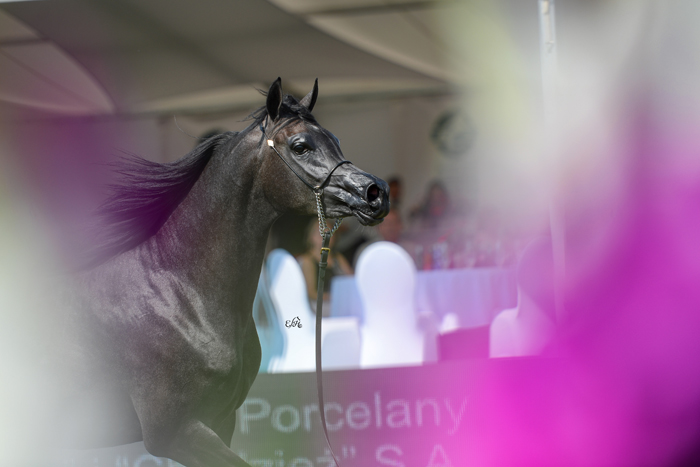
In her new home in Qatar Wasa produced her first son, Ghaith Umm Aludham by Emerald J. The colt has been sold to a new owner. “I have two fillies already out of her, by Fadi Al Shaqab and by Wadee Al Shaqab. Now she is in foal to Marwan al Shaqab”, says Nasser.
Show successes do not come out of thin air
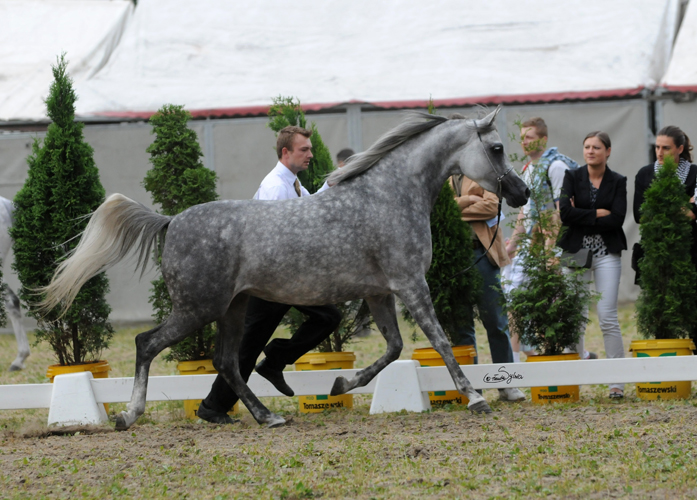
The Qatari breeders were drawn to Wasa not only by her show successes, but also by her pedigree. “First of all she is a WH Justice daughter which is a world class stallion”, Nasser explains. “I saw that she took so much from Justice regarding type and charisma. She has got also a lot from her Polish damline. To me it is a really good combination. I am sure she is one of the best Justice daughters. The way how she moves it is really a special one, very Justice. I also admired her conformation and the way how she is using her neck”.
Falborek is the first Polish stud that used WH Justice and it was in times when the stallion was considered controversial in our country. “Together with my father we decided to breed Wasa’s dam, Waresa, to WH Justice”, says Lucas Goździalski. “Waresa was a beautiful, strong, typical Polish mare, with a very good body and very good legs, so we took a risk. Of course you do not always get what you dream up, but this time we were successful”.
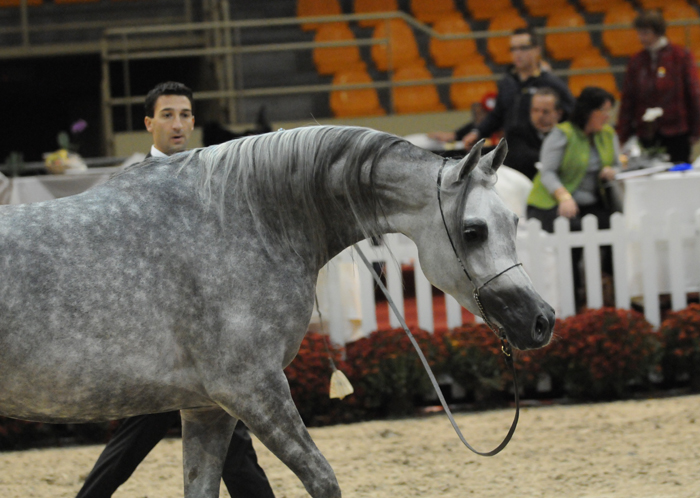
“Wasa was very beautiful from the very beginning, very dry, with a pretty head and neck”, continues her breeder. “She was definitely one of the best foals in our stud, though with a delicate psyche. As a yearling she won her class at Białka, in the hands of the late Wojciech Kowalik, with I think the highest at the time in history score among private bred horses – and we must remember that ten years ago it was very hard to compete against the state studs. That time at Białka she opened up and showed what she was capable of, but there were problems at subsequent championships. The breakthrough came at the age of three. Her daughters have a similar character – they are also late maturing horses. Wasa’s more important successes include her performances at the European and World Championships in 2014. She placed a good fifth spot in her class at both shows – 91,00 and 542,50 pts respectively, against very strong competition from top world breeders. These results attest to the exceptional conformation of Wasa, which she passed on to her daughters and granddaughters”.
Wasa’s dam, Waresa (Empres – Włócznia/Borek) was a Junior Champion at the international show in Falborek and apart from Wasa also produced her full brother Wadis (born 2008) and Warma (by QR Marc, born 2009). Both horses have also been successfully shown.
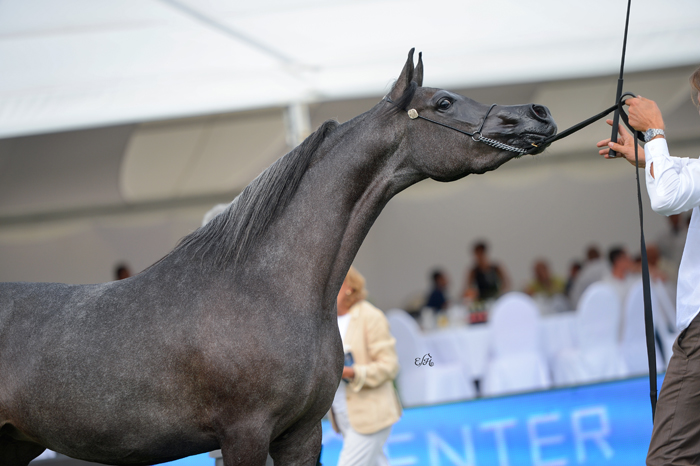
Włócznia was purchased by Krzysztof Goździalski from Tarus Arabians, in foal to Empres, a Monogramm son. “Daughters, granddaughters and great-granddaughters of Monogramm have a show and breeding potential”, says Lucas Goździalski. “When it comes to mares it is usually the damline that is most valued, but here the decisive role was in my opinion played by Monogramm’s granddaughter Waresa. Not her dam Włócznia or granddam Włodarka. The core of this damline’s success should be sought in Waresa”.
“On the spear side of Wasa’s pedigree, thanks to WH Justice, we have of course El Shaklan and the heritage of Estopa”, adds the breeder. “We also have an entire family of “Padrons”, from Padron, through Padrons Psyche and Magnum Psyche. This gave type, head and neck. But deeper in the pedigree we have Probat, once a very successful sire. So the foundation of good genes comes to a large extent from Waresa”.
Delving further into the pedigree
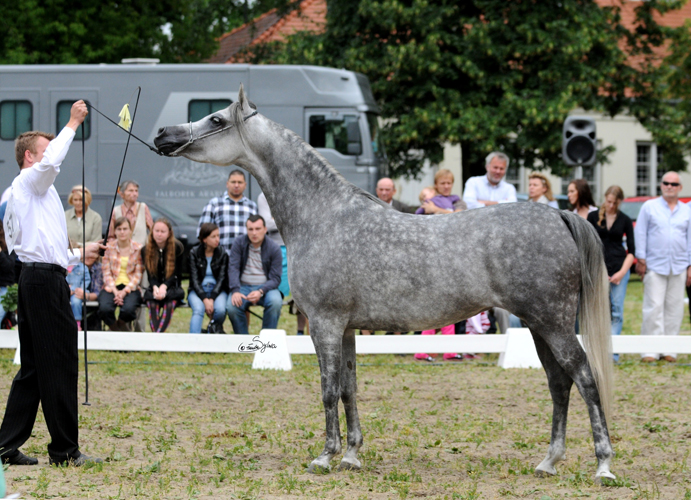
Wasa is a continuer of the extremely valued and meritorious in Polish breeding damline of Gazella and Gazella II. In the All Breed Database next to Gazella II (Kohejlan d.b. – Abra/Anvil), born in 1914, we find the following information: “Bred by Count Wladyslaw Dzieduszycki, Jezupol Stud, Poland, owned by Janow Podlaski Stud, Poland, Export 1939 to Tersk Stud, Russia; measurements: 145-165-18,0 cm, Grade: ELITE, died 1942, 16 registered progeny (15 Poland, 1 Russia)”.
The knowledge of Polish history allows to properly interpret this data. She was one of the mares robbed by the Soviets from Janów in September of 1939, when the Russians marched into Poland from the east, ultimately sealing the fate of a country attacked by the Germans on September 1st. Gazella II was the descendant (great-great-great-granddaughter) of Gazella, imported in 1845 from the desert to Jarczowce by Count Juliusz Dzieduszycki (1817–1885) together with Mlecha and Sahara. All three are known from the paintings of the famous Juliusz Kossak. The rich breeding traditions of Jarczowce were continued in Jezupol by Władysław Dzieduszycki. In 1914 almost all those horses were captured by the Russian army. Only three young fillies avoided this fate, among them Gazella II, who after World War I contributed greatly to the restored Janów stud, where she luckily lived to the age of 25. Only then, as a result of a second historic cataclysm that was World War II, she suffered what others from the same breeding suffered many years before… The horses were loaded onto wagons and transported to Caucasus. Among the mares robbed by the Russians seven were lost and twenty made it to Tersk, from where they were again evacuated in fear of the approaching German troops – by foot! – to Kazakhstan. Only nine of them lived longer than three years, among them mares who would become famous dams in later times: the Ofir daughter Mammona 1939, great-granddam of Monogramm, and Taraszcza 1937, who produced Negatiw, the sire of Nabor and Bandos; the valuable Kewa 1923, the grandam of Piewica who, sold to Poland in 1953, began today’s world-famous “P” line. And finally the wonderful Gazella II.
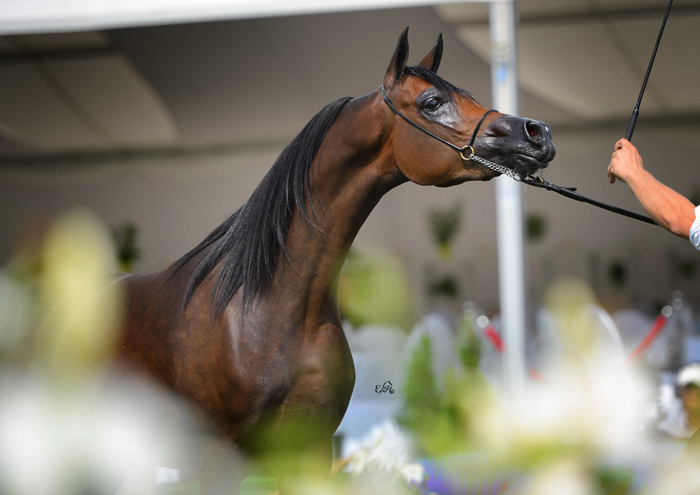
The sire of Gazella II, the superb Kohejlan d.b., was imported to Poland by Count Władysław Dzieduszycki (“probably”, as Roman Pankiewicz wrote in “Polish Arabian horse breeding 1918-1939”) in 1910 from Bombay. Gazella II was a dam of four sires and eight mares, who wrote themselves down in history, among them Elegantka 1922 by Bakszysz, the aforementioned Taraszcza 1937 by Enwer Bey, Najada 1932 by Fetysz and Jaskółka II 1928 by Koheilan I, who is of most interest to us here as the ancestor of Wasa. She got lost in the turmoil of war, but her daughter Wilga 1938 (by the epochal Ofir), described by Roman Pankiewicz as a “beautiful mare”, survived. After the evacuation of Janów’s horses to Germany in 1944 Wilga was reclaimed and returned to Poland. In 1957, after a long and rich breeding career (incl. Carmen 1942 by Trypolis) she produced her last daughter in Albigowa, Wieszczka by Geyran. She died that same year. Her granddaughter Wiorsta by Banat (born 1975 at Kurozwęki Stud) is the granddam of Włócznia by Borek, also bred by Kurozwęki, dam of Waresa, born at Falborek (2002).
“Gazella II was a striking example of how careful you must be in elite breeding with evaluating and eliminating mares due to flaws in their conformation and physical looks”, wrote Professor Witold Pruski. “She was an unimpressive and ugly bay mare (…) She only expressed great femininity. Despite that she proved to be an extraordinarily valuable broodmare, who created her own era in Janów”.
Today the two highest sold mares in Polish private breeding come from this damline. “Money is important, thanks to them you can continue to develop your breeding, but large money does not necessarily guarantee breeding success”, sums up Lucas Goździalski. “Breeding is definitely greatly connected to finances, but you must also have a lot of luck, knowledge and humility. I have learned humility with time, though I must say that the lack of it also resulted in surprising effects. So yes, money is important, but knowledge is even more important. There must be a little of everything, because if one factor is missing, there will be no results”.
Download the PDF version of the article»


